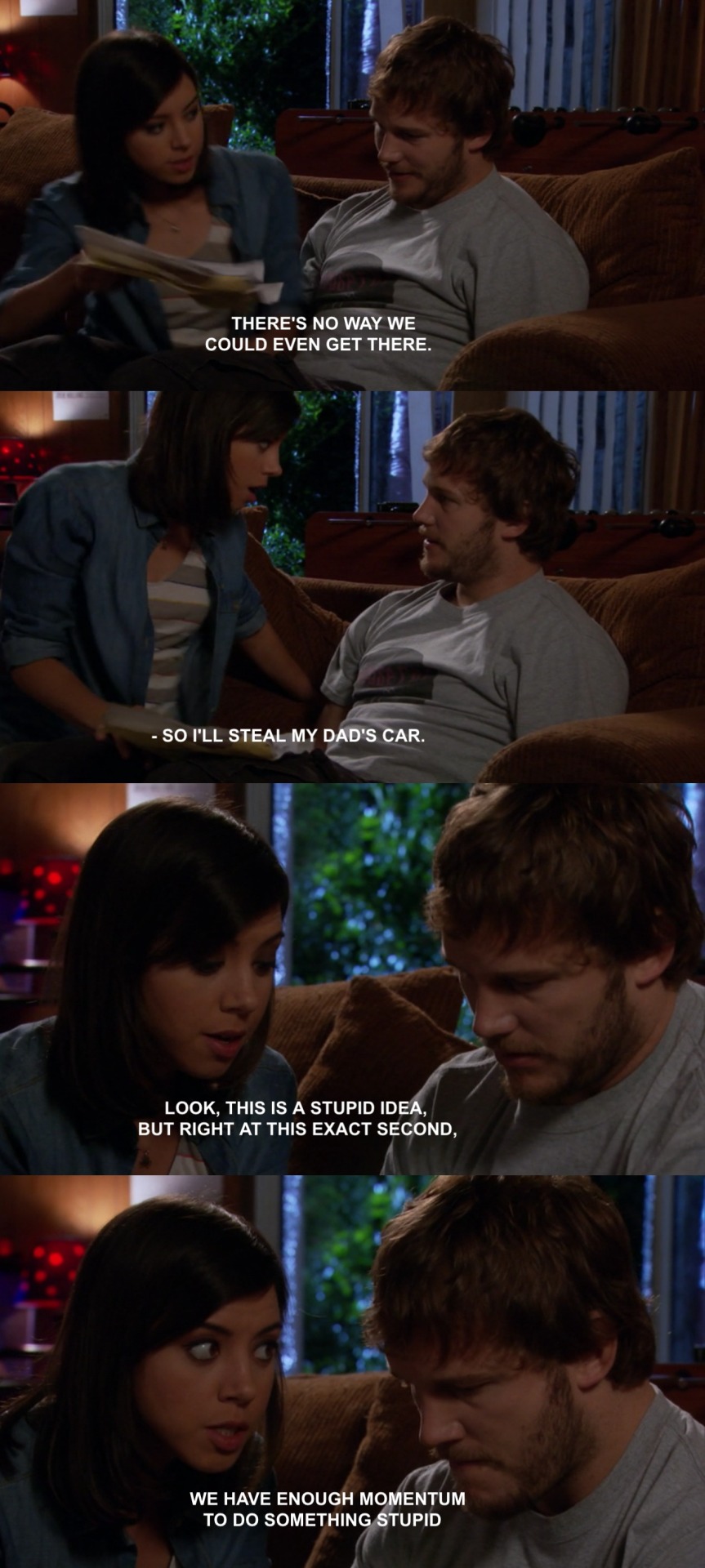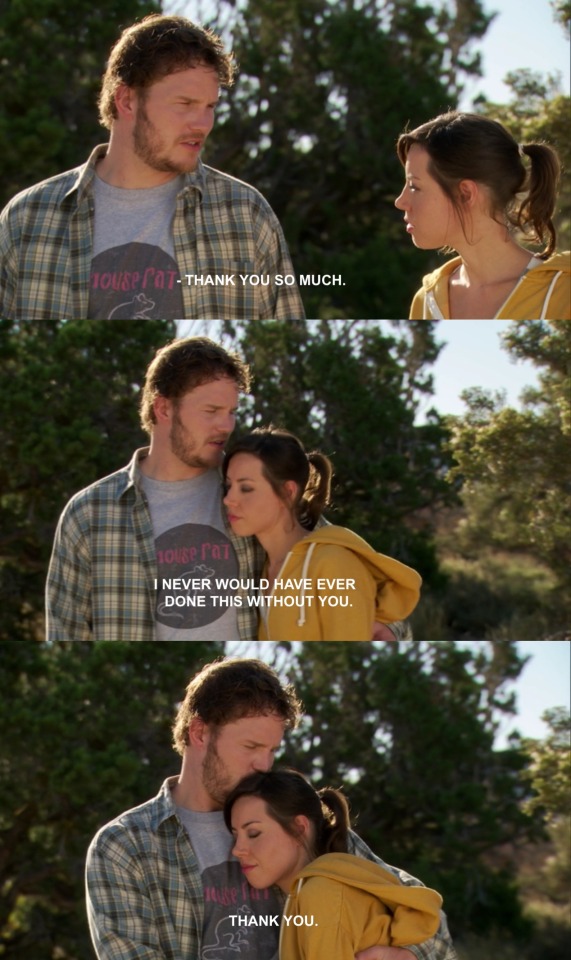Used for personal use and expansion of sociological imagination
Don't wanna be here? Send us removal request.
Text
A Seat at Our Table
Our eating habits are socially constructed; what we eat, as well as when and how we eat, is often regarded as a social practice that has been predetermined by our culture. Different cultures consume different food under different setting and circumstances, but one key component is usually present in this practice, that is social interaction. Food is the introduction to building community and relationships, although it is necessary to live, it is often viewed in celebratory or ritualistic association in a social setting. However, in recent years in western culture, predominantly in America we have begun to take the togetherness out of our eating habits. We view food and a chore that keeps us alive and not as chances for celebration and social interaction. Americans are eating more on the go, in their cars, at their desks at work, or in front of the TV. The Standard American Diet (SAD), is a diet that often consists of high amounts of red meats, fats, refined grains and sugars, sodium, and highly processed and packaged meats and foods. This western diet is advancing around the world, and McDonalds and Americanization is spreading like a disease. The western diet is not just about the food, its about the lifestyle and many of these foods are marketed towards young busy people and what really is being sold is convenience in a box or at the drive thru. The only thing certain is change, and throughout our history we have changed and advanced, currently the food we eat has changed so much our great-grandparents may not even recognize some of it as food. We also seek out to change cultural perspectives by changing the good foods that have been around. Americanized Mexican foods, Asian foods, and Italian foods seem to be a favorite, we have manipulated these foods by adding extra sugars, salts, preservatives and “special sauces” until they are no longer culturally relevant and take on a new form. We have over packaged, over processed, over marketed and signed over too much power to our food industry.
The French aren’t as fat as Americans, and that makes us angry. The French diet typically consists of full-fat cheese and yogurt, butter, breads, and lots of wine. Though the French diet is full of cheese, wine, and bread (foods that are not typically consider overly healthy) they have low rates of heart disease and obesity. The catchphrase “French Paradox” is often used in nutritional literature to describe this trend in data and is what makes us Americans so angry, but it all comes down to the culture of the French rather than the science of the food. The French typically eat full three course meals and eat for over two hours a day, globally the people in France spend more time eating that any other country. Americans spend the least amount of time at the table compared to other countries in the world, eating for only an hour a day (Bourget, 2018). This brings back to the topic earlier discussed about the American lifestyle and the newfound convenience of our meals that challenge social growth. In a study conducted by NPR and Harvard School of Public Health found that the ideal image of family dinners is beginning to fade. According to the study, “most children are in households where a parent says it is important that the family eats together, but for almost half (46%) this is difficult to do – largely because of work for the adults and extracurricular activities for the children” (NPR, Robert Wood Johnson Foundation, Harvard School of Public Health, 2013). Also, for some families who do eat dinner together, the setting is not around the table but the television. Distractions are present in current societies and these distractions are working their ways into what we consider social norms, so watching TV, being on our cellphones, laptops, tablets, and iPods during meals has become more socially acceptable and increasingly present during meal times. The same study by NPR and Harvard found that 24% of families experience these distractions during their dinners (NPR, Robert Wood Johnson Foundation, Harvard School of Public Health, 2013). Though serval studies have shown that eating together and engaging in social interactions during a meal reduces obesity and benefits psychological development, our busy lifestyles are competing for our time. The unconscious motion of eating while watching television or writing an email conflicts greatly with our health. The French may spend more time eating than Americans, but they also spend more time socializing and in turn consume smaller and more balanced portions than we do.

(OECD, 2018).
Since we’ve discussed the when and how we eat in America (on the go, or in front of the TV) it is also important to know what we are eating and how these foods have evolved over time. In America we eat a lot of overly processed and refined foods, most of our dinners come in a box or a can and have a shelf life longer than the average life expectancy for humans. These foods did not start out this way but have been shaped over time by our obsession with convenience and health. The processed foods have ways of appealing to our senses thanks to years of nutritional science engineering and fear of fats. Michael Pollan, author of “The Omnivores Dilemma” counters the French Paradox by quote, “… the American paradox: that is, a notably unhealthy people obsessed by the idea of eating healthily” (Pollen, 2004). Americans are easily swayed by fad diets and even more easily mislead by the food industry and their main goal to turn over profits. Over the years, food has been manipulated to the point of making food as addictive as cocaine. Sugar, salt, fat, MSG, and casein-these ingredients have been thickening the wallet of the food industry and the waist bands of Americans, creating a social issue that sells. With body image changing the food we eat have been changing and marketed in such a way to specific target audiences. Frozen sells kids’ sugary cereal, professional athlete’s sell Wheaties, yogurt companies are adopting “manly” packages, and women are faced with everything “skinny girl” in the stores. We have so modified our food its is hardly recognizable, this can especially be said for some ethnic foods in America. Taco Bell is not Mexican food, it’s American. The sushi we eat at Chinese restaurants is actually traditionally Japanese and our version of sushi is not what Japanese would consider sushi at all, and the Chinese food in America is packed with extra sugars and MSG which is not customary in the original dish. French fries are not French and German Chocolate Cake has no association with Germany. Why have we created and claimed these foods to be ethnic, when really, they are American foods? We have warped our cultural perspectives and created a whole new market for the false prophets of the food world. We have in a way blended the communities and created completely different foods in the process, this is partly due to generational changes as the original immigrant families become more American than their pervious culture and being assimilating to more American tastes. Authentic ethnic restaurants do exist in America, but overall, we have confused the general public about fortune cookies and fats.
Even though we have blended and shaped our food industry, and seen a rise in nutritional scientist and engineers, supplements and new seasonal fad diets the sad truth is, the western diet kills you. We live in a society that is over fed but under nourished. Only in western diet is pizza considered a vegetable to be severed as a school lunch. The main interests in connection to sociology is that our diets are socially and culturally created but so intertwined with politics and economic gain that the balance is beginning to tip dramatically. The when, how, and what we eat will continue to change and as society continues to adapt to it. Michael Pollan stated in his documentary based around his book “In Defense of Food an Eaters Manifesto” by PBS that we can stay on the western diet of eating processed food, fast foods, and junk foods and just wait for evolution to adapt us to it or we can change our eating habits (Pollan, 2015). The latter sounds like the best option, in hope that the when, how, and what we eat changes back to what it used to and should be. Food should be celebrated and enjoyed bringing back the social aspects of sitting down and eating with family and friends. However, in order for this change in our diets it requires a change in our lifestyles as well.
References
Bourget, A. April 4, 2018. The French spend more time eating than anybody else. SBS. Retrieved from https://www.sbs.com.au/yourlanguage/french/en/article/2018/03/27/french-spend-more-time-eating-anybody-else
NPR, Robert Wood Johnson Foundation, Harvard School of Public Health, February 25, 2013. A Poll About Children and Weight: Crunch Time During the American Work and School Week - 3pm to Bed. Retrieved from https://media.npr.org/documents/2013/feb/Children
%20and%20Weight_Summary.pdf
OECD. 2018. Time spend eating and drinking. Retrieved from https://www.oecd.org/gender/ balancing -paid-work-unpaid-work-and-leisure.htm
Pollan, M. October 17, 2004. Our nations eating disorder. The New York Times Magazine. Retrieved from https://michaelpollan.com/articles-archive/our-national-eating-disorder/
Pollan, M. 2015. In defense of food. PBS. Retrieved from https://www.youtube.com/watch?v=37NHX2iZrBA
3 notes
·
View notes
Text
Impacts of the Pro-Life Movement in the 1970’s-1980’s and the Inequalities That Remain.
Impacts of the Pro-Life Movement in the 1970’s-1980’s and the Inequalities That Remain.
When my parents were about my age, in the later 1970’s-1980’s there was a big uprising in the pro-life community after the Roe vs. Wade supreme court decision in 1973 which ruled restricting and criminalizing abortion is unconstitutional. This ruling was based around the restriction brought on by banning abortion in relation to the fourteenth amendment. With the states interest in restricting abortions and protecting the potential of human life, abortion regulation rules made that allow abortions until the third trimester of pregnancy. During the third trimester fetal development is at the preparation for delivery stage where the fetus almost or fully developed and are commonly called late term abortions and can be provided up until the moment of birth if seen fit by the physician in order to preserve the mother’s health. The only women granted the right to a late term abortion have serious health risks such as stroke, septic shock, or extreme blood loss that could result in the material morbidity. The prolife movement is only concerned with the fetal life and so most disagree very strongly with late term abortions even if the mother’s life is lost in the process, and material mortality rates in the united states are higher now that they were when my mother gave birth to me.
Although most anti-abortion movements declare themselves as rights issues over religious issues, a majority of the involvement is central to the catholic and other Christian affiliations and supporters. The main focus of the pro-life movement is to call on the rights of the individual fetus, opposed to the mother perusing the abortion. The view that human life begins at conception highlights abortion as murder and therefor a sin. With new technologies in the deployment the pro-life movement in the late 1980’s and 1990’s the pro-life movement was able to market through ultrasound video and pictures of the unborn fetus which took the movement to new emotional and political grounds. There were laws enforced by states that required women to watch ultrasounds before allowing the abortion, or spousal laws that only permitted abortion if both parties agreed to the abortion even though it is the mothers body. There was also the Hyde amendment, which declared that low income women, such as those on Medicaid could not have abortions as it was not covered by federal funds, unless in the case of rape, incest, or serious threats to the mother’s health. In the 1980’s the evangelical Christians rejoined the movement in great numbers and drastically radicalized pro-life protesting and opposition tactics. The Operation Rescue, an anti-abortion organization was formed during this time and aggressively protested outside of abortion clinics in the thousands. Operation Rescue performed thousand strong human blockades at these protests in cities around the nation, making it nearly impossible for women to get abortions. According to Jennifer Holland in Abolishing Abortion: The History of the Prolife Movement in America, extremists in the movement went even further. Between the early 1980s and the 2000s, there were 153 assaults, 383 death threats, 3 kidnappings, 18 attempted murders, and 9 murders related to abortion providers (Holland, 2016).
The impacts that this movement had and are still having today are present in our current government and parties are still pushing for criminalization of abortions. President Trump has pushed for making late term abortions illegal with revision of Title X has made it more difficult for women, especially low-income women, to get abortions. So far late term abortions are still legal, and some U.S judges are seeking to block the new abortion policies outlined by the Trump administration, quoting “At the heart of these rules is an arrogant assumption that the government is better suited to direct women’s health care than their providers,” (McShane, 2019). There are more pushes for states supporting spousal consent and fathers’ rights laws, which require the male counterpart to permit the woman to get an abortion. There are arguments to both sides that the father has a right to the child as well if it is his and wishes to raise the child making the abortion unethical. However, this is seen as major control over a woman’s body when it is not property that should be controlled in such a way. There is still a very strong presence in the pro-life community today, and the past decades have shaped the pro-life argument and how we view women’s bodies and reproductive health. Abortion is still a highly volatile subject; however, we neglect the material mortality and morbidity. We still hear so much about abortion and statistics related to abortions, but we do not talk about or hear much about the fact that women now are more likely to die during childbirth than their mothers even with our rapid advancements in technology and health care spending. Instead, the current topic is in changing the abortion laws even though they may more likely result in higher material morbidity and working to keep low income women from getting the care that they need.
References
Holland, L, J. 2016. Abolishing Abortion: The History of the Prolife Movement in America. OAH. Retrieved from https://tah.oah.org/november-2016/abolishing-abortion-the-history-of-the-pro-life-movement-in-america/
McShane, M. April 23, 2019 Federal judge in Oregon to block new Trump abortion policy. USA Today. Retrieved from https://www.usatoday.com/story/news/nation/2019/04/23/federal-judge-oregon-block-trump-abortion-policy/3558566002/
0 notes
Text
No, They’re Suede
No, They’re Suede
In September of 2015 I made a drastic life change. I was a full-time manager at a clothing retail store and cosmetologist. I had come to a point where I wasn’t happy, and I felt like I was missing a sense of accomplishment in my life, this feeling led me to switch out my pink collar for a blue one overnight. On the same day in the middle of September, I started working in an abattoir and attending welding classes through a career college at night. I honestly had no idea what I was doing, I just knew I needed to be doing something different. I remember one of the most liberating feelings was when I realized I did not have to try so hard to look nice for everyone. I could retire my curling iron and skirts and just put on a baseball hat, jeans, and my steel toe boots. I enjoy wearing makeup and cute clothes, but after years of constantly having to keep it up was exhausting and had be come a strenuous part of my morning routine. However, on that day in September, in my baseball hat and boots, I was terrified and more intimidated than I ever had been. I was no stranger to hard work, having grown up in a farming community, but I was hardly prepared for what I was getting myself into.
I felt at times the men I worked with were more worried about my nails and hair then I ever was, “Let Gary do that, you don’t want to ruin your nails”, what about Gary’s nails? Just because mine were painted pink doesn’t make them any better than his. Everyone wanted to help me, which frustrated me because they were not as accommodating to their other fellow male coworkers and classmates. It was hard to get my point across that I was there to work and learn, and not someone made of glass. They all wanted to lift the heavy lugs of meat or help me carry sheet metal that I was more than capable of doing on my own. I knew that they had good intentions of helping but I did not need help, and no matter how much I protested they were always looking for the nearest phonebooth to change into their superman suits. It was hard for me to get respect when everyone was so overbearing and had convinced themselves of my unwarranted fragility. I knew me being there was a threat to their masculinity. Welding and working in an abattoir are generally considered men’s jobs, and when I was the only female in the room throwing around 200-pound pigs and welding in 4g position with 7018 just like the rest of them, they were uncomfortable. It wasn’t that they did not want me there, but they had a hard time understanding why I wanted to be.
One of the times I had really questioned my choices and how my classmates saw me was after I came to the shop after a speech class. I had a welding class after one of my speech classes one quarter and for our speech class we were expected to dress professionally on days we presented. I had on a blazer, black dress slacks and heels and I had brought a change of clothes in my gym bag for when I went to my welding class at six. When I got there, I talked to a few of my classmates and instructor and set my welding helmet and welpers in my booth when a guy in my class comes up to me and askes “Are you going to weld in those?” and pointed at my shoes. I was somewhat taken back by the question and replied “No, they’re suede.” This is when I realized a couple of things; one, this guy probably doesn’t even know what suede is, and two, I was not being taken seriously as a welder. If a guy walked in with dress shoes on, no one would ask him “Are you going to weld in those?”, because there aren’t posters and magazine clip out of men welding in dress shoes as an object of fantasy. Welding in heels would not only ruin my shoes, but I would burn my feet. This was a question of my competence and I was deeply hurt by it. I had been welding for a few months now, I knew how to set up all the equipment and I was scoring higher than most of my classmates on weld tests, and this guy thinks I am going to weld in heels. I felt like I had been reduced to a men’s room poster rather than the Rosie the Riveter I was trying to live up to. Over the months it was obvious that I the skills I needed were much more than physical, but I need tough skin and a sharp tongue as well. I dealt with many forms of harassment, that I guess I wouldn’t really call it harassment, although it was defiantly something others looking in would have interpreted as such, but it was really just a part of the job and everyone was fair game. It seemed the meaner I was to them the more they liked me. Nancy Wood, Palmar College welding instructor states “remember it is a man’s world you have chosen to work in, but you do not need to bow to harassment on any job” (Simpson, n.d). So, I didn’t bow.
Everyone I worked with was great, I gained a lot of confidence and some really great friends. It just took a very long time for me to break through to them and reassure that I was more than capable of handling myself and not EVER going to weld in heels. I left the welding field and working at the abattoir with a stronger backbone and extra layers of epidermis (not just from cuts and burns). It was what I would describe as the most challenging yet rewarding times in my life so far (I haven’t graduated from MTU yet) and I honestly appreciated all the time I was there. I also think that I have changed the men I work with and the outlook that they had, I was less of a threat and more of an equal as the months passed. The challenges I faced were socially constructed beliefs of women and our capabilities as hard workers, even though I had some physical barriers I proved that I was stronger than I seemed and resourceful then they had believed.
References
Simpson, J. n.d. Tips for women in the welding industry. Carmen Electrode. Retrieved from https://www.arc-zone.com/blog/carmenelectrode/about/tips-for-women-in-the-welding-industry/
0 notes
Text
MTU Voter Participation Analysis
As reluctant I am to admit it, I do not vote, or I guess I should say I have never voted in a presidential election. I am 22-years-old, I have only missed one (on account of only being 14 in 2012) but regardless I have never held interest in politics. I diverge from my family’s strict republican views and when I was younger, I learned quickly that I could make my parents upset with topics on abortion, same-sex marriage, and immigration. I would not consider myself belonging to any party however because I have not invested any serious time into politics, which I feel is important do in order to make a very well-informed decision when voting. Political affiliation does not really make up a part in my identity like it does for some. Though I understand the historical concepts behind our nation do not care much to update myself with our current Presidents Twitter and biased on either side new sources. This is sad and unfortunate as I have said before because this is our voice, this is my voice. It is my opportunity to make a change in the way I see as positive, for the collective to cone to agreeance, voting is one of the most progressive movements towards change where it is seen needed. With that being said, I feel that a lot of my MTU companions are in similar boats as I am. Engineers are not generally rewarded for their political affiliations, and as a future health care provider it is not in my best interest to outwardly profess politically charged views.
MTU is known as a hard STEM school. We attract and draw in students from all backgrounds, but a majority of those students are engineers, scientists, and math majors. MTU does not even offer a political science major option (even though “science” is in the name) only research opportunities. According to the NSLVE study, in the lowest voter turnout by field of study in both 2012 and 2016 elections were Engineering and Engineering Technologies students, with 22.5% and 27.3% rates respectively. While students in Education, and “other” were among the highest with over 50% participation in both years. Following behind with Social Sciences and Communication and Journalism at 34.4% and 32.5% in 2012 and increasing to 34.9% and 53.3% respectively in 2016 (NSLVE, 2017). It is not saying that all STEM students do not have interests in politics and hold strong views and beliefs but that it is often in a sense put on the back burner and neglected. Politics must be actively sought out and reaffirmed in order to stay relevant in a student’s life. On campus political involvement is not highly emphasized through studies, or even in recreational affiliation. From a student who is not very politically involved, the only time that I have seen anything about voting on campus is at the bringing of the year when students are offered help registering to vote. However, it is in the offered classes, such as Sociology, are an option for students to engage and expand in civic responsibility however it is difficult to tie these concepts in to Electrodynamics and Molecular Biology which make up a bulk of STEM students schedules.
MTU may not be number one in voter turnout across the United States, but our voter turnout is nothing to be despondent about. There is a range of students, like me, who have never seriously invested time and attention to political involvement that need to come to change, or just simply lost connection. I would not say that not voting is bad, but it is missed opportunity. However, there are the people out there urging students to register to vote, and classes offered that emphasize our major obligations as citizens, along with clubs and seminars. Ultimately it comes down to choice. Being exposed to all of these elements is something that can allow the constant connection. I am not saying I am absolutely-100%-without of doubt voting in the 2020 Presidential election, but it is because of a class like this that makes me revisit some of the views I have held and the ways I could improve upon my civic duties.
References
NSLVE. August 2017. 2012 & 2016 Campus Report. Student voting rates for Michigan Technological University. Tufts. Retrieved from https://idhe.tufts.edu/nslve/2016
0 notes
Text
BMO
BMO
In April of 2010 the TV series Adventure Time was released and aired its final season in September 2018 adding up to 10 seasons and 238 episodes. The show is central around two main characters, Finn the Human and Jake the Dog and the adventures they go on with a slue of wacky characters in the Land of Ooo. The show, although animated and seemingly directed at kids, has caught the attention of many age groups including teens and adults. There are many aspects of Adventure Time that can be analyzed through a sociological lens, because although parallel to current culture and way of thinking, the show takes on different perceptions, and isolates specific self and societal struggles and has been a strong topic of conspiracy among its viewers. For example, the Ice King kidnaps princesses and usually highlights on the perverted aspect of male society and its views of women and beauty but also expresses his deep loneliness and compulsive need for acceptance. Princess Bubblegum embodies a genius leader of the Candy Kingdom and expresses responsibility and strength. It is also interesting to note the subtle distinction in color choices, Princess Bubblegum is obviously pink, while Finn and the Ice King are in blue. Despite this direction and distinct color choice we associate with male and female genders, and the fact that both main characters are males portrayed as heroes, the show greatly demonstrate gender fluidity and challenges gender stereotypes. One specific character, BMO, has been brought in to light in regard to third wave feminism. BMO is a non-binary character, referred to as both a little boy and little girl, he, she, man, and m’lady depending on the scenario. BMO is a robot video game system so the fact that BMO is not assigned a gender is not surprising, however the BMO self-identifies as both male and female, and expresses love to both clearly and unclearly gendered objects. BMO doesn’t have a biology grounding him/her to specific gender expectations and social norms, however as noted by PBS Idea Channel, R2D2 from Star Wars and Rosie from the Jetsons are also not grounded by biology either, yet they have clearly defined genders and specific qualities accepted by that gender (PBS, 2013). Also, in the subseries episodes where Finn and Jake become Fiona and Cake, all the genders of the characters are swapped except BMO remains exactly the same. BMO switches his/her gender whenever she/he wants to, and this gender fluidity is accepted and unquestioned, though some viewers find that it is difficult not to label BMO and pin a specific gender to the character, BMO is overall accepted as a non-binary (which is perfect, considering electronics operate given binary code). By doing this, Pendleton Ward, the creators of Adventure Time have found a way to implement progressive cultural thinking and dissolve or invert gender roles, all of which provided in animated entertainments for children and young adults.




References
PBS Idea Channel. July 2013. Is BMO From Adventure Time Expressive of Feminism? PBS Digital Studios. Retrieved from https://www.youtube.com/watch?v=uqtNSdDFGBM
0 notes
Photo








valentines for nerds part 3! (part 1, 2 )
12K notes
·
View notes
Photo









valentines day for nerds pt.2 (pt.1)
55K notes
·
View notes
Text
Praying for the woman I’ll be in 5+yrs I hope she’s happy, and loved, living life unapologetically, doing what she loves.
544K notes
·
View notes
Text
*lifts weights so i can carry bigger dogs*
192K notes
·
View notes
Text
Teen Birth Rates and Socioeconomic Factors



In the ten-year span between 2007 and 2016 the amount new teenage mothers (20-15 years of age) in the United States have steadily decreased. According to observations made on The Annie E. Casey Foundation Kids Count Data Center, rates for teenage births in 2007 were between 42-12% per 1,000 teen women dependent on age group, that rate has now dropped 47% overall for all age groups between 20 and 15 years old (KIDS COUNT).Originally, I had two hypothesized causes for the overall drop in teenage pregnancy and the central reason that teen pregnancy was so prevalent in specific areas. In exploring the data, teen birth rates seemed to be heavily linked to two factors, children living below 150 percent of the poverty line, as well as children living in foster care. It has been theorized that these may be linked on the basis family structure, educational opportunities, and overall positive emotional youth support in the communities which are predominantly lacking across impoverished areas and to children in the foster care system. When look at data across the map of the Untied States, states like Texas, New Mexico, Oklahoma, and Kentucky had the highest teen birth rates. Among these states they also had some of the highest levels of females in foster care, between 45-50% as well as the highest number of children below 150 percent poverty line, between 34-42% (KIDS COUNT, 2016).
Teen pregnancy is very much a social construct that has many complicating variables in association to family relationships/structure (closeness, number of siblings, parental supervision, ext.), and emotional security; these are only a few serious social factors that have been identified as major roles persuading youth to participate in sexual activity that ultimately results in a child. According to the Nation Center for Research, adolescent-parent bonding has been shown to delay sexual activity and increase the use of contraceptives, making children in the foster care system at increased risk for sexual behavior and teen pregnancy. The Nation Center for Research also suggests “a teenage girl in foster care may become pregnant intentionally as a way of creating her own family. However, a young woman aged out of the foster system is more likely to experience financial hardships, such as inability to pay for rent or electricity, increasing the likelihood that her own children will be placed into the foster care system” (Nation Center for Research, 2019). Pregnancy is not, nor has ever been an issue solely revolving one party, according to Crystal Aryes in an online article in Vittana, on the topic of teen pregnancy and poverty, only one in five fathers marry the mothers of their children and pay less that $800 per year in child support (Aryes, 2019). These cycles, apparently rooted in poverty and the foster care system, if left unchecked, creates the baseline for the new generation of unexpecting teenage parents, and are linked in such a way that reverse causation is something can could be suspected. Does foster care and poverty cause increased teen pregnancy? Or do teen having children cause increased poverty and children in foster care? It is important to better explore these issues in order to close the gaps in our current system and work towards preventions and breaking these cycles.
Finally, all this data looks to be in conjunction with one another on the map, however the tending data suggest something else. As stated at the beginning, teenage pregnancy is decreasing dramatically, but rates of poverty and children in the foster care system is stagnant and over the last ten years has hardly fluctuated, if anything at times has increased only to plateau at the same rate it started. Despite race and ethnicity teen pregnancy is dropping, so that factor is eliminated. The data retrieved also does not include data on abortions or miscarriages. Is this something that is surrounding individualized state-based struggles? How do family dynamics vary from state to state that could cause these trends and differences in the data? It may be that education is the real cause of the drop in teenage pregnancy. Awareness about prevention and proper uses of protection could be increasing, as well as availability for contraceptives. It could also be attributed to recent movements in feminism. Being a student, my sociological knowledge is limited and only speculations can be made. It is also difficult to pinpoint specific areas as the issues are father reaching than can result in any significant conclusion in an afternoon of research.
References
Aryes, Crystal. (2019). Teen pregnancy and poverty. Vittana. Retrieved from https://vittana.org/teen-pregnancy-and-poverty
Kids Count. (2019) Children below 150 percent poverty. Kids Count. Retrieved from https://datacenter.kidscount.org/data/map/46-children-below-150-percent-poverty?loc=1&loct=2#2/any/false/false/871/any/328/Blue/
Kids Count. (2019) Children in foster care by gender. Kids Count. Retrieved from https://datacenter.kidscount.org/data/map/6245-children-in-foster-care-by-gender?loc=1&loct=2#2/any/false/false/573/15/12991/Blue/
Kids Count (2019). Teen births by age group. Kids Count. Retrieved from https://datacenter.kidscount.org/data/map/8125-teen-births-by-age-group?loc=1&loct=2#2/any/false/false/870/8/15590/Blue/
National Center for Research. (2019). Teen pregnancy and foster care. National Center for Research. Retrieved from http://www.center4research.org/teen-pregnancy-foster-care/
0 notes














